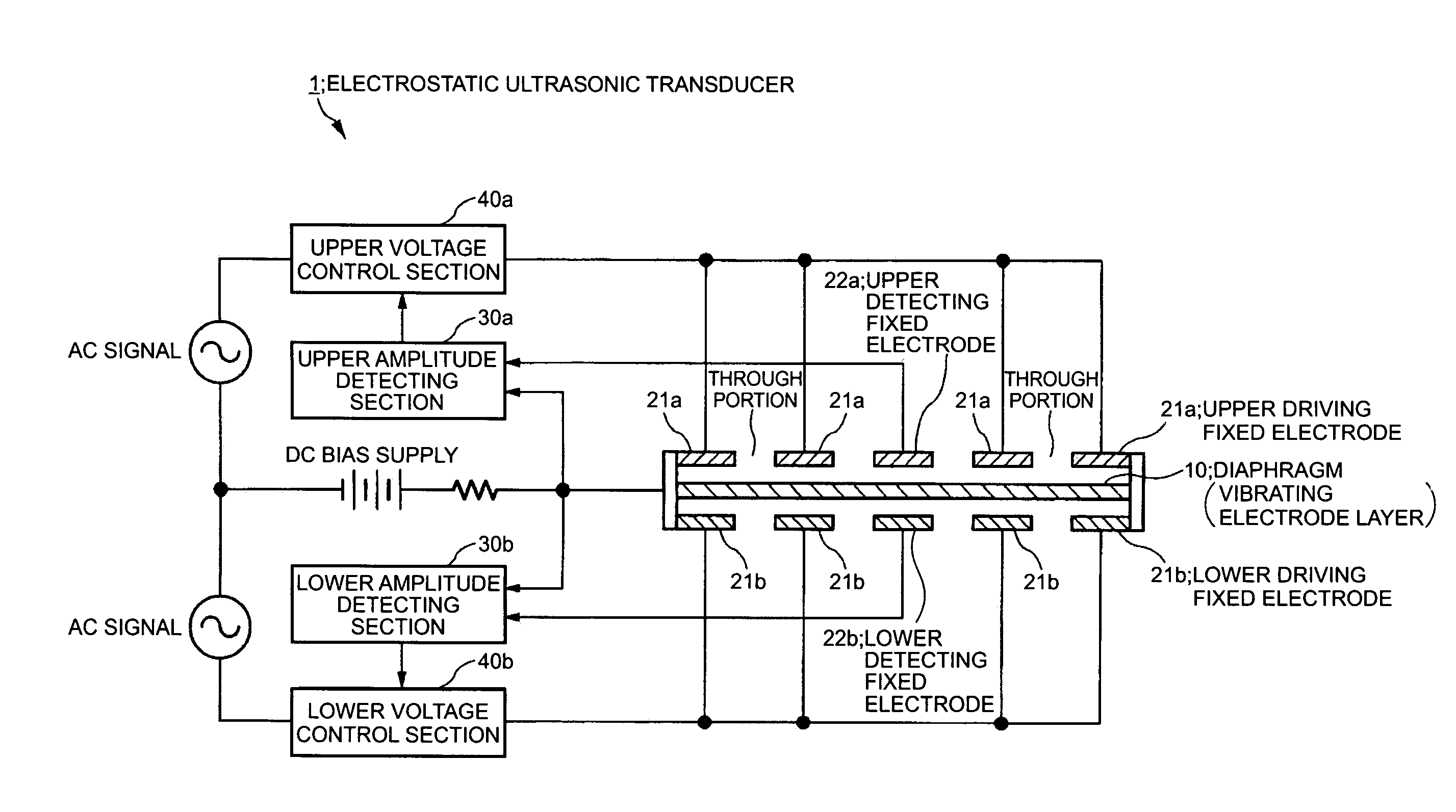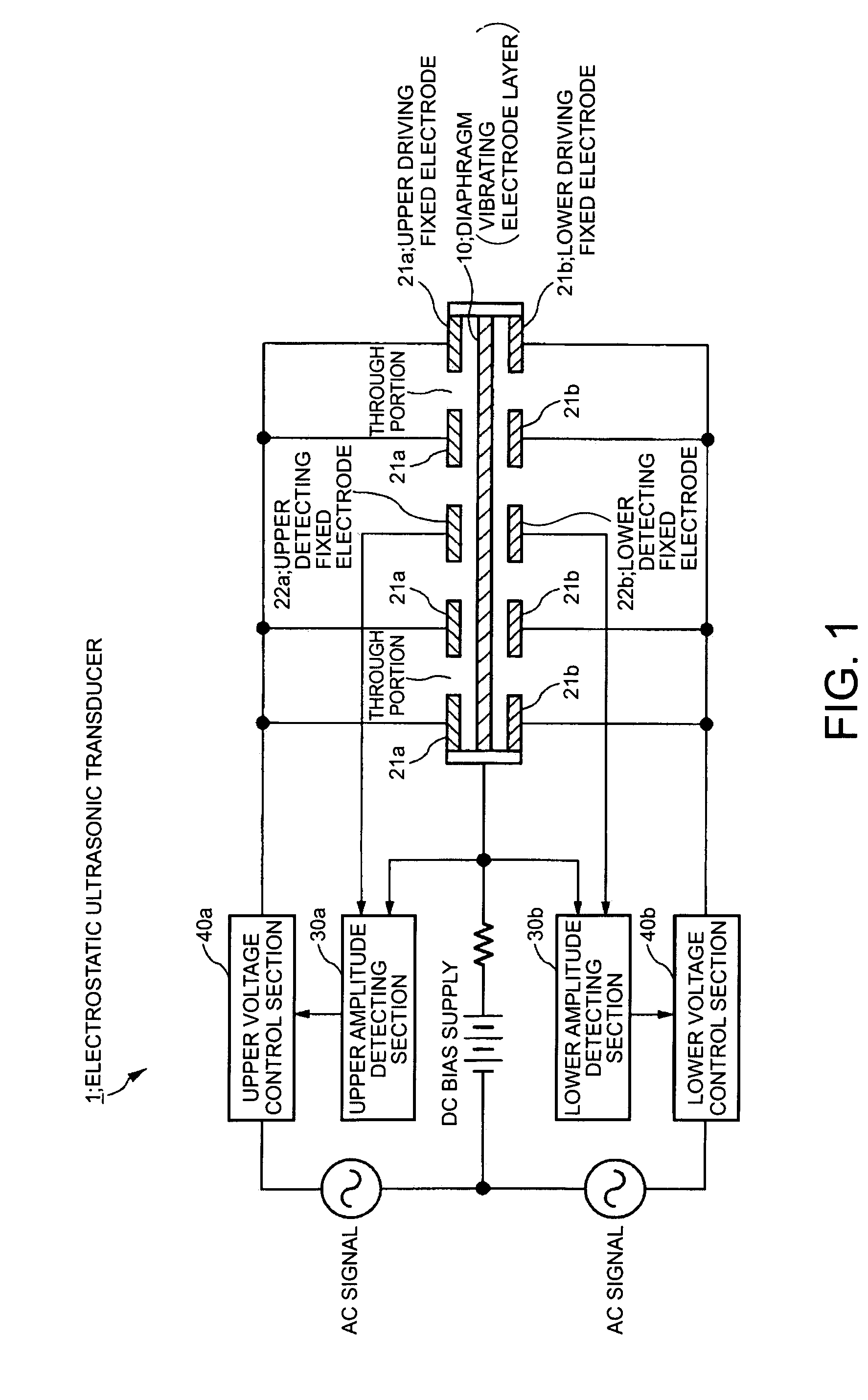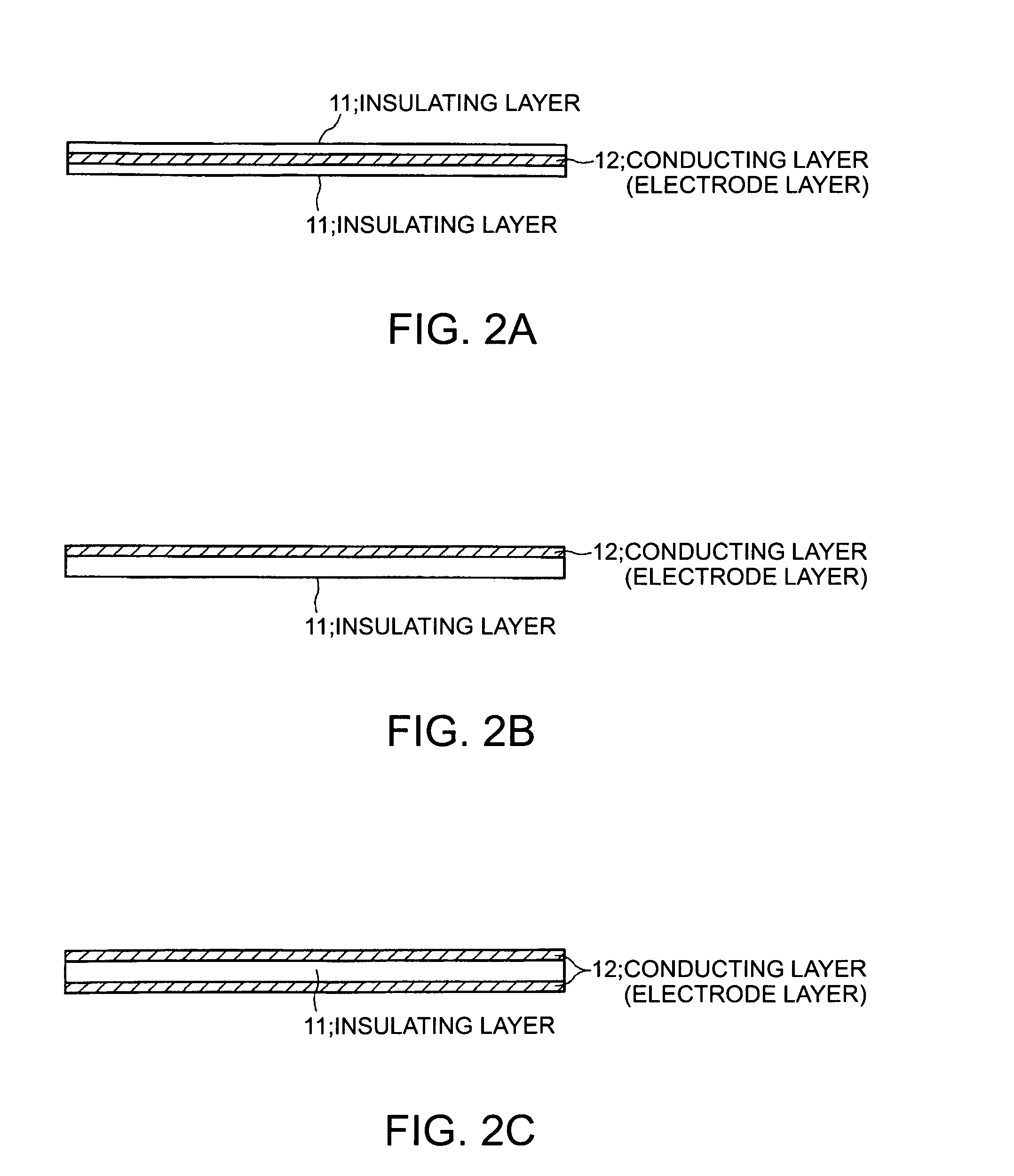Ultrasonic transducer, ultrasonic speaker, and method of controlling the driving of ultrasonic transducer
a technology of ultrasonic transducers and ultrasonic speakers, which is applied in the direction of ultrasonic/sonic/infrasonic diagnostics, mechanical vibration separation, application, etc., can solve the problems of generating waveform distortion, difficult to improve reproduction sound quality, and difficult to control the reproduction range, so as to reduce the audible components, suppress the asymmetrical positive and negative distortion of the output vibration waveform, and the effect of high-directivity speakers
- Summary
- Abstract
- Description
- Claims
- Application Information
AI Technical Summary
Benefits of technology
Problems solved by technology
Method used
Image
Examples
Embodiment Construction
[0081]Preferred embodiments of the invention will be described hereinbelow with reference to the drawings.
[0082]Structure of Ultrasonic Transducer of the Invention
[0083]FIG. 1 is a sectional view of a first structural example of an ultrasonic transducer of the invention. The ultrasonic transducer 1 shown in FIG. 1 is a push-pull electrostatic ultrasonic transducer, in which a diaphragm (vibrating electrode layer) 10 having a conducting layer is sandwiched between upper fixed electrodes (upper driving fixed electrodes 21a and an upper detecting fixed electrode 22a) and lower fixed electrodes (lower driving fixed electrodes 21b and a lower detecting fixed electrode 22b). The upper fixed electrodes (first fixed electrodes) and the lower fixed electrodes (second fixed electrodes) are arranged so as to face both sides of the diaphragm 10. In the ultrasonic transducer 1 shown in FIG. 1, the fixed electrodes 21a and 22a and the fixed electrodes 21b and 22b are symmetric with respect to the...
PUM
 Login to View More
Login to View More Abstract
Description
Claims
Application Information
 Login to View More
Login to View More - R&D
- Intellectual Property
- Life Sciences
- Materials
- Tech Scout
- Unparalleled Data Quality
- Higher Quality Content
- 60% Fewer Hallucinations
Browse by: Latest US Patents, China's latest patents, Technical Efficacy Thesaurus, Application Domain, Technology Topic, Popular Technical Reports.
© 2025 PatSnap. All rights reserved.Legal|Privacy policy|Modern Slavery Act Transparency Statement|Sitemap|About US| Contact US: help@patsnap.com



